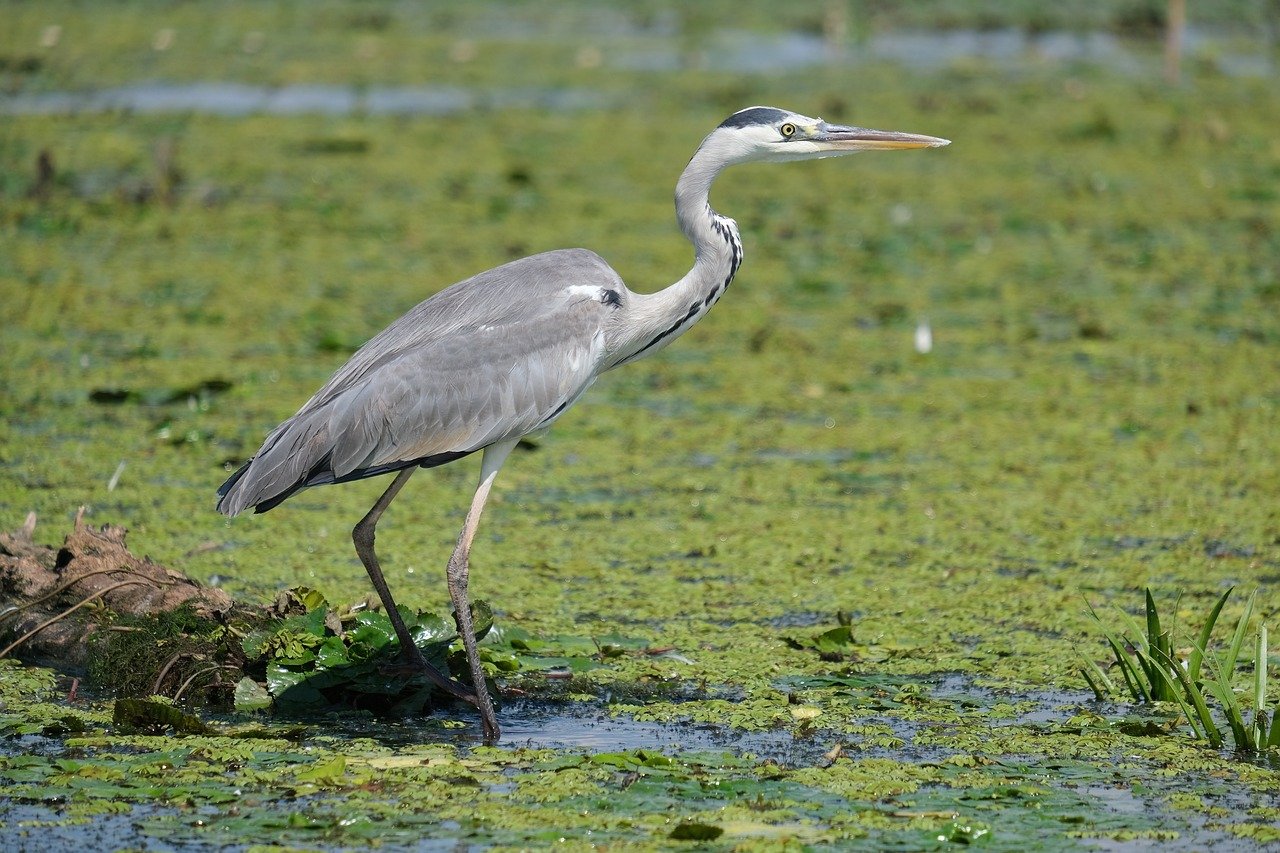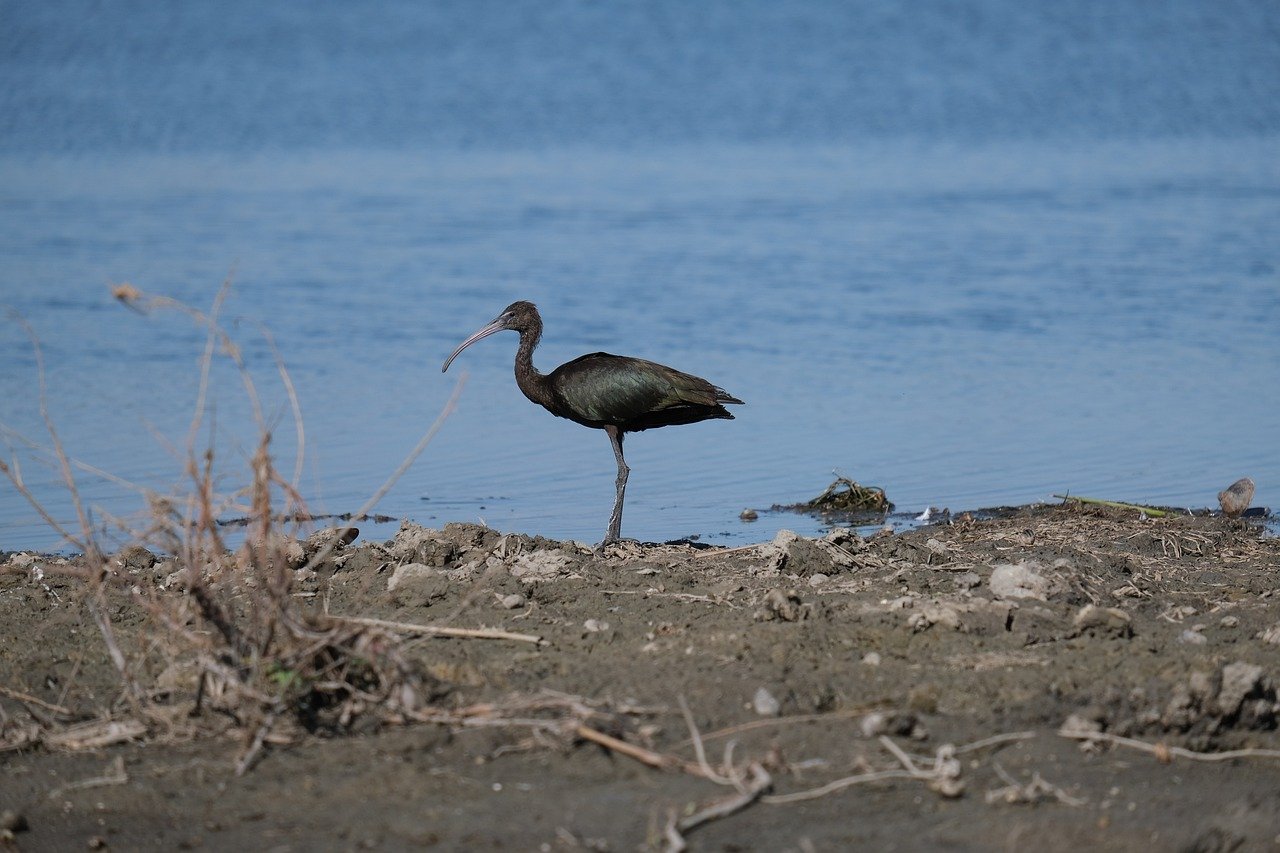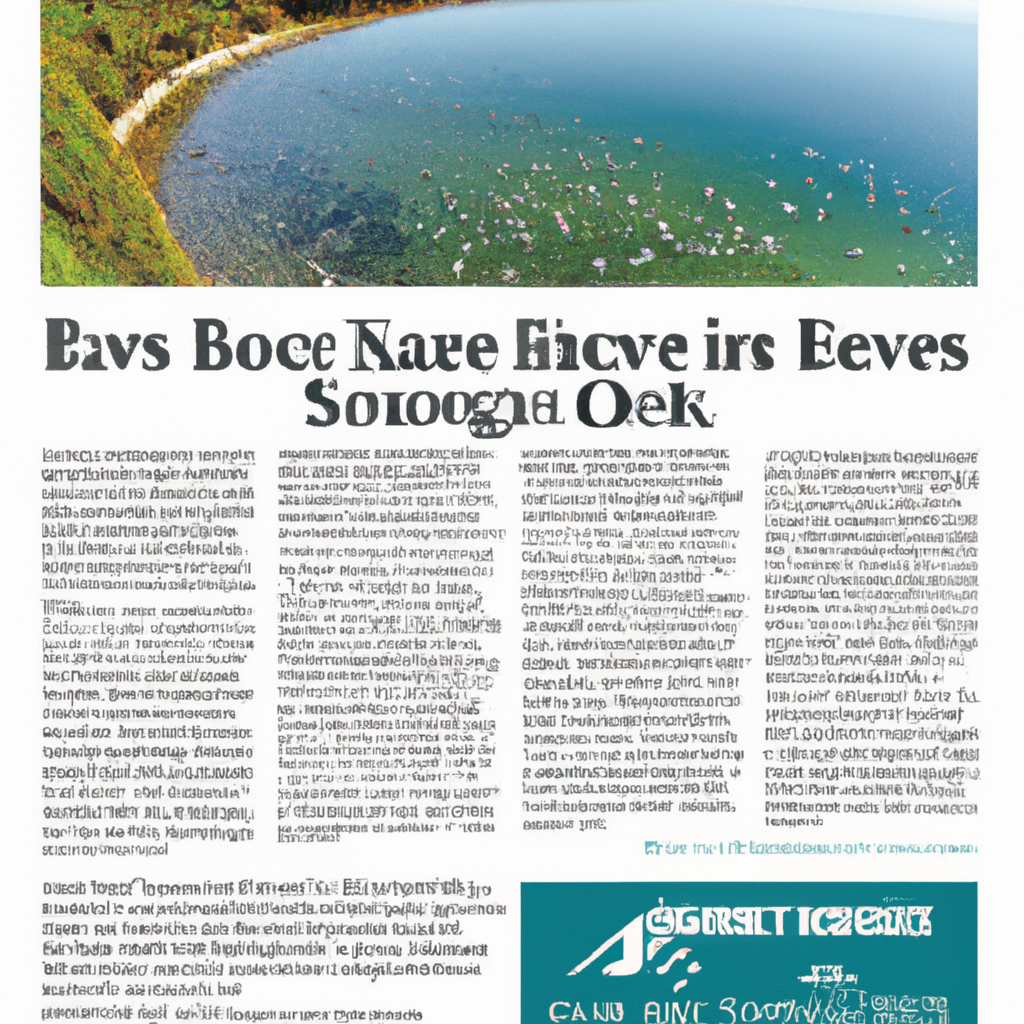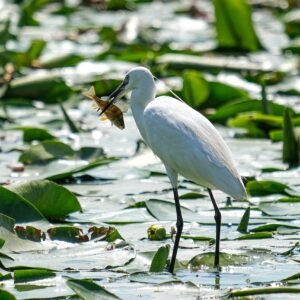Birdwatching Bliss: Explore These Stunning Nature Reserves for Avian Adventures
Imagine immersing yourself in the tranquil beauty of nature as you embark on a captivating adventure to spot and observe a myriad of colorful and rare bird species. Nature reserves offer the perfect sanctuary for birdwatching enthusiasts like you, allowing you to witness these magnificent creatures in their natural habitats. With lush forests, pristine wetlands, and diverse landscapes, these reserves provide the perfect backdrop for an unforgettable birdwatching experience. From the melodious songbirds to the majestic raptors soaring in the skies, every moment spent in these reserves will leave you in awe of the avian wonders that grace our world. So grab your binoculars, pack your camera, and get ready to embark on a memorable birdwatching journey in these remarkable nature reserves.

Understanding Birdwatching
What is birdwatching?
Birdwatching, also known as birding, is a recreational activity that involves observing and studying birds in their natural habitats. It is a popular hobby among nature enthusiasts and people of all ages. During birdwatching outings, individuals aim to spot and identify different species of birds, often keeping a record of their sightings. It can be done as a solitary activity or as part of a group.
Why is birdwatching popular?
Birdwatching has gained popularity for several reasons. Firstly, it allows individuals to connect with nature and appreciate the beauty of birds and their habitats. It offers a peaceful and meditative experience, where one can escape the hustle and bustle of everyday life. Birdwatching also provides an opportunity for learning and education, as enthusiasts explore the fascinating world of avian behavior, migration patterns, and species identification.
Additionally, birdwatching serves as a great way to promote environmental conservation. By observing and studying birds, individuals develop a deeper understanding and appreciation for the natural world. This, in turn, encourages them to contribute towards bird conservation efforts and their habitats.
The benefits of birdwatching
Birdwatching offers numerous benefits for both physical and mental well-being. Spending time outdoors, surrounded by nature, can have a calming and rejuvenating effect on the mind. It provides an opportunity for exercise while walking or hiking through nature reserves in search of birds.
Furthermore, birdwatching requires focus and attention to detail, which helps improve concentration and mindfulness. It encourages individuals to be present in the moment, observing and connecting with the natural environment. Birdwatching also stimulates curiosity and lifelong learning, as enthusiasts strive to identify different species and understand their behaviors.
How to get started with birdwatching
Getting started with birdwatching is easy and requires minimal equipment. The first step is to find a suitable nature reserve or birding hotspot near your location. Research online or consult with local birdwatching groups to discover the best places to observe birds.
Next, acquire a basic birdwatching field guide and a pair of binoculars. The field guide will help you identify different bird species based on their physical characteristics and habitats. Binoculars are essential for getting a closer look at birds that may be far away or high up in trees.
Once you have the necessary equipment, head out to a nature reserve and start observing birds. Remember to be patient, as birds can be elusive and may require time and practice to locate and identify. Joining birdwatching tours or local groups can also provide valuable guidance and support as you embark on your birdwatching journey.
Choosing the Right Nature Reserve
Researching nature reserves
Before planning a birdwatching trip, it is important to research different nature reserves in your area. Look for reserves that are known for their diverse bird populations and accessible habitats. Explore online platforms dedicated to birdwatching, such as forums and websites, where enthusiasts share their experiences and recommend birding hotspots.
Factors to consider when choosing
When selecting a nature reserve for birdwatching, there are a few factors to consider. Firstly, check the distance and accessibility of the reserve. Choose a location that is convenient and within a reasonable travel distance. Look for reserves that offer maintained trails or bird observation platforms to enhance your birdwatching experience.
Consider the time of year and the migratory patterns of birds. Some reserves may have specific seasons during which certain bird species are more abundant, making it an ideal time to visit. Additionally, pay attention to the reserve’s conservation efforts and ensure they align with your personal values.
Best birdwatching destinations
The best birdwatching destinations will vary depending on your location. However, several iconic reserves around the world are known for their exceptional birdwatching opportunities. The Amazon Rainforest in Brazil, the Maasai Mara National Reserve in Kenya, and the Galapagos Islands in Ecuador are just a few examples.
For birdwatchers in North America, the Everglades National Park in Florida, the Great Smoky Mountains in Tennessee, and Point Pelee National Park in Ontario, Canada, are renowned for their diverse bird populations. In Europe, the Camargue Nature Park in France and the Danube Delta in Romania are popular destinations.
Remember to plan your trip well in advance and check for any permits or fees required to access certain nature reserves. Respecting and adhering to local regulations will ensure a positive experience for both you and the birds.
Preparing for Your Birdwatching Trip
Essential birdwatching equipment
Before embarking on a birdwatching trip, it is essential to have the right equipment. The most crucial item is a good pair of binoculars. Opt for binoculars with magnification ranging from 8x to 10x and a larger objective lens diameter to gather more light.
Carry a field guide specific to the region you will be birdwatching in. Field guides provide detailed information about different bird species, including their physical characteristics, habitats, and behavior. They often include illustrations and maps to aid in identification.
Recommended field guides
There are numerous field guides available, catering to birdwatchers in different regions of the world. Some popular choices include “The Sibley Guide to Birds” by David Allen Sibley, which covers North American birds, and “The Collins Bird Guide” by Lars Svensson, which focuses on European birds.
For birdwatchers in Australia, “The Field Guide to the Birds of Australia” by Graham Pizzey and Frank Knight is highly recommended. Similarly, “Birds of Southern Africa” by Ian Sinclair and Phil Hockey is a comprehensive guide for birdwatchers in that region. Research and choose a field guide that suits your specific birdwatching needs.
Dressing appropriately for birdwatching
When heading out for a birdwatching trip, it is important to dress appropriately. Opt for comfortable clothing that allows for ease of movement. Layering is key as it allows you to adjust to changing temperatures throughout the day.
Wear neutral-colored clothing to blend with your surroundings and avoid bright colors that may scare away birds. Additionally, choose footwear that is comfortable for walking and offers good traction, especially if you will be navigating uneven terrain.
Packing for your trip
Apart from the essential equipment, there are a few additional items to pack for your birdwatching trip. Carry a small backpack to store water, snacks, and extra layers of clothing. Consider packing a notebook and pen to record sightings and take notes on bird behaviors.
It is also useful to have a camera or smartphone with a decent zoom lens for capturing bird photographs. However, always prioritize observing and enjoying the birds over photography, as being present in the moment is what makes birdwatching truly rewarding.
Lastly, don’t forget insect repellent, sunscreen, and a hat to protect yourself from the elements. By being well-prepared and organized, you can make the most of your birdwatching experience.
Understanding Bird Behavior
Key bird behaviors to observe
When birdwatching, it is important to pay attention to various behaviors exhibited by birds. These behaviors can provide insights into their feeding habits, courtship rituals, and social dynamics. Some key behaviors to observe include:
- Feeding: Watch out for birds foraging for food on the ground, in trees, or in the water. Different birds have unique feeding techniques, such as probing, diving, or swooping.
- Courtship displays: During the breeding season, many bird species engage in elaborate courtship displays to attract mates. These displays can include singing, dancing, and intricate flight patterns.
- Nest building: Some bird species construct intricate nests using a variety of materials. Observe birds carrying twigs, leaves, or other nesting materials to their chosen nesting sites.
- Aggression and territoriality: Birds can exhibit aggressive behaviors when defending their territories or protecting their nests. Watch for birds chasing away intruders or engaging in vocal confrontations.
Learning bird calls and songs
Bird calls and songs are essential for bird identification and can add another layer of enjoyment to birdwatching. Many bird species have distinct vocalizations that can help in identifying them, especially in dense vegetation or when birds are not in plain sight.
Investing time in learning bird calls can greatly enhance your birdwatching experience. Field guides and online resources often provide audio recordings of different bird songs and calls. Practice listening to recordings and familiarize yourself with the vocalizations of common bird species in your region.
Understanding bird migration patterns
Bird migration is a fascinating phenomenon that involves the seasonal movement of birds across vast distances. Understanding migration patterns can help birdwatchers anticipate the arrival and departure of specific bird species in different regions.
Research the migratory routes and timing of birds in your area to better plan your birdwatching trips. The fall and spring seasons are particularly important times to observe bird migration, as many species travel to and from their breeding grounds.
Keep track of local birdwatching reports and online platforms that provide recent sightings and migration updates. Being aware of migration patterns will increase your chances of spotting a wide variety of bird species during your outings.

Identifying Common Bird Species
Common bird species in nature reserves
Nature reserves are home to a wide range of bird species, each with its own unique characteristics. Familiarize yourself with the common bird species found in the reserves you plan to visit. Field guides and online resources can provide detailed information on the bird species you can expect to encounter.
Some popular common bird species found in nature reserves include robins, sparrows, chickadees, hummingbirds, woodpeckers, and finches. However, the specific species will vary depending on your region and the time of year.
Field markings and physical characteristics
Observing and noting the physical characteristics and field markings of birds is crucial for species identification. Pay attention to details such as the size and shape of the bird, color patterns, beak shape, and wing markings.
Field guides will often provide descriptions and illustrations of these characteristics to aid in identification. By learning to identify key physical features, you can quickly narrow down the possible bird species and make accurate identifications.
Identifying birds by habitat
Birds are highly adapted to their specific habitats, and understanding their preferred environments can assist in identifying different species. Pay attention to the types of habitats you encounter during your birdwatching trips, such as forests, wetlands, grasslands, or coastal areas.
Research which bird species are commonly associated with each habitat. For example, waterfowl like ducks and herons are often found in wetland areas, while forest-dwelling birds such as warblers and owls prefer dense woodland habitats.
By becoming familiar with the characteristic habitats of different bird species, you can narrow down your search and increase your chances of successful species identification.
Recording and Documenting Your Sightings
The importance of recording sightings
Keeping a record of your birdwatching sightings is both enjoyable and valuable for future reference. Over time, your records can serve as a personal birdwatching journal that allows you to track your progress and the growth of your bird knowledge.
Recording sightings also contributes to citizen science initiatives, where birdwatchers share their observations to help scientists and researchers monitor bird populations, behavior, and migration patterns. Your sightings may contribute to important conservation efforts and add to the collective understanding of avian ecology.
Methods for documenting birdwatching
There are various methods for documenting your birdwatching sightings. Traditional methods include keeping a field notebook where you can jot down the bird species, location, date, and any interesting observations or behaviors. Sketching birds or taking notes on their physical characteristics can also be helpful.
In addition to handwritten records, many birdwatchers utilize digital platforms or apps specifically designed for recording bird sightings. These platforms provide easy entry for data, allow for geotagging locations, and sometimes even have functionality for sharing sightings with the birdwatching community.
Popular birdwatching apps and websites
Some popular birdwatching apps and websites facilitate the recording and sharing of bird sightings. eBird, developed by the Cornell Lab of Ornithology, is a widely-used platform that allows birdwatchers to record sightings, explore birding hotspots, and contribute to scientific research.
Other apps like Merlin Bird ID and iNaturalist provide tools for species identification and encourage sharing sightings with the community. Birdwatchers can also participate in local and global birding challenges through these platforms.
By utilizing digital resources, you can store and access your birdwatching records conveniently, while also actively contributing to scientific knowledge and conservation efforts.

Birdwatching Etiquette
Respecting the environment and wildlife
Birdwatching etiquette emphasizes the importance of respecting the environment and wildlife while observing birds. It is crucial to minimize disturbance to birds and their habitats. Stay on designated trails and paths, and avoid trampling on sensitive vegetation or nesting areas.
Do not disrupt or interfere with bird behaviors, especially during courtship or nesting periods. Keep a safe distance from nests and breeding sites, and never touch or handle birds unless it is necessary for their well-being.
Maintaining a safe distance from birds
A key aspect of birdwatching etiquette is maintaining a safe distance from birds. Respect their natural behaviors and avoid getting too close, as this can cause unnecessary stress and interfere with their daily activities. Binoculars and telephoto lenses allow for close observation without disturbing the birds.
If birds display signs of distress or move away from your presence, it is a clear indication that you are too close. Retreat slowly and give them space to resume their activities undisturbed.
Interacting with other birdwatchers
In nature reserves and popular birdwatching locations, it is common to encounter other birdwatchers. Interacting with fellow enthusiasts can be a rewarding part of the birdwatching experience. Share sightings and exchange information with others, as they may have valuable insights and tips to offer.
Respect the boundaries and personal space of other birdwatchers and maintain a considerate and friendly attitude. Remember that everyone is there to enjoy and appreciate the birds, so fostering a sense of community and collaboration is important.
Bird Photography in Nature Reserves
Tips for capturing quality bird photos
Bird photography can add an extra dimension to your birdwatching experience, allowing you to capture memorable moments and stunning images. Here are some tips to enhance your bird photography skills:
- Patience is key: Birds can be elusive, so be patient and wait for the perfect shot. Observe their behaviors and anticipate their movements to capture unique and natural photographs.
- Use natural light: Utilize the soft, warm light during the golden hours of sunrise and sunset. This lighting conditions can create beautiful and dramatic effects in your photos.
- Focus on the eyes: The eyes of a bird are often the most captivating part of the image. Ensure that the eyes are crisp, clear, and in focus to create a striking photograph.
- Get down to their level: Try to capture birds from their eye level by squatting or kneeling. This perspective offers a more intimate and engaging view of the birds.
Recommended camera equipment
To capture quality bird photographs, it is important to have appropriate camera equipment. A digital single-lens reflex (DSLR) or mirrorless camera with interchangeable lenses is ideal for bird photography. These cameras allow for manual control over settings and offer better image quality.
For bird photography, a telephoto lens with a focal length of at least 300mm is recommended. Longer telephotos, such as 400mm or 600mm, provide even greater magnification for capturing birds at a distance. Additionally, consider using a tripod or monopod for stability and sharpness, especially when using longer lenses.
Ethical considerations when photographing birds
When photographing birds, it is crucial to prioritize their well-being and adhere to ethical considerations. Avoid causing unnecessary stress or disturbance to birds solely for the sake of capturing a photograph. Respect their boundaries and limit your presence to a reasonable time.
Use your judgment and knowledge about bird behavior to determine if your actions are impacting the birds negatively. Avoid using playback recordings of bird calls to attract birds, as this can disrupt their natural behaviors and cause stress.
Remember, the welfare of the birds should always come first. Capturing incredible bird photographs is rewarding, but it should never be at the expense of the birds’ safety or well-being.

Joining Birdwatching Tours and Groups
Advantages of joining guided tours
Joining guided birdwatching tours can enhance your birdwatching experience in several ways. Expert guides have extensive knowledge of local bird species and habitats, increasing the chances of spotting unique and rare birds. They can help with species identification, provide insights on bird behavior, and answer any questions you may have.
Guided tours often take you to the best birdwatching locations, ensuring maximum bird sightings during your trip. Additionally, being part of a group creates a sense of camaraderie and allows for shared experiences, learning, and collaboration with other birdwatchers.
Finding local birdwatching groups
Local birdwatching groups provide excellent opportunities to connect with fellow bird enthusiasts in your community. They often organize regular outings to nature reserves and offer a wealth of knowledge and expertise.
Research online or consult with local birdwatching organizations to find groups in your area. Often, these groups have established schedules for birdwatching outings and can provide valuable advice on the best times and locations for observing birds.
Online communities for birdwatchers
In addition to local birdwatching groups, online communities offer a platform for birdwatchers to connect and share their experiences. Websites, forums, and social media groups dedicated to birdwatching provide a space to ask questions, share photographs, and discuss various aspects of birding.
These online communities often have members from different regions and expertise levels, allowing for a diverse range of perspectives and knowledge. Participating in online discussions can broaden your understanding of birdwatching and foster connections with like-minded individuals worldwide.
Giving Back to Bird Conservation
Supporting local nature reserves
One of the best ways to give back to bird conservation is by supporting local nature reserves. Many reserves rely on visitor fees and donations to maintain habitats and protect bird populations.
Consider becoming a member or making donations to nature reserves in your area. These contributions help fund research, habitat restoration, and educational programs aimed at promoting bird conservation. Volunteering your time with reserve activities is another way to actively support their conservation efforts.
Getting involved in bird conservation projects
Getting involved in bird conservation projects is a fulfilling way to contribute to the protection and preservation of bird species. There are various organizations focused on bird conservation that offer volunteer programs and internships.
These projects can involve tasks such as habitat restoration, monitoring bird populations, and raising awareness about bird conservation issues. Participating in these initiatives not only helps birds directly but also provides opportunities to learn and engage with experts in the field.
Participating in citizen science initiatives
Citizen science initiatives play a crucial role in bird conservation by gathering data and observations from birdwatchers worldwide. These initiatives can be as simple as reporting bird sightings through online platforms or participating in annual bird counts like the Christmas Bird Count.
By participating in citizen science projects, you contribute to the knowledge base of bird species, population trends, and distribution patterns. This information aids scientists and conservation organizations in making informed decisions and formulating strategies to protect birds and their habitats.
By actively giving back to bird conservation, you become an important advocate for the well-being of birds and contribute to the long-term preservation of avian species.
In conclusion, birdwatching offers a wonderful opportunity to explore and connect with the natural world. Understanding bird behavior, identifying species, and documenting sightings are all integral parts of this fulfilling hobby. By respecting the environment, joining tours and communities, and participating in conservation initiatives, you can contribute to the preservation of bird populations and their habitats. So grab your binoculars, head to a nature reserve, and embark on an exciting birdwatching adventure that will bring you closer to the beautiful world of birds. Enjoy the journey!

